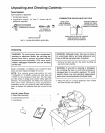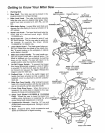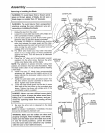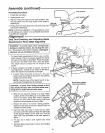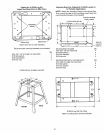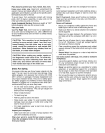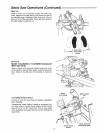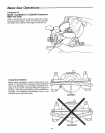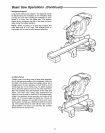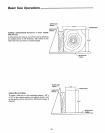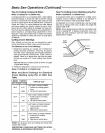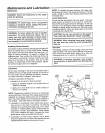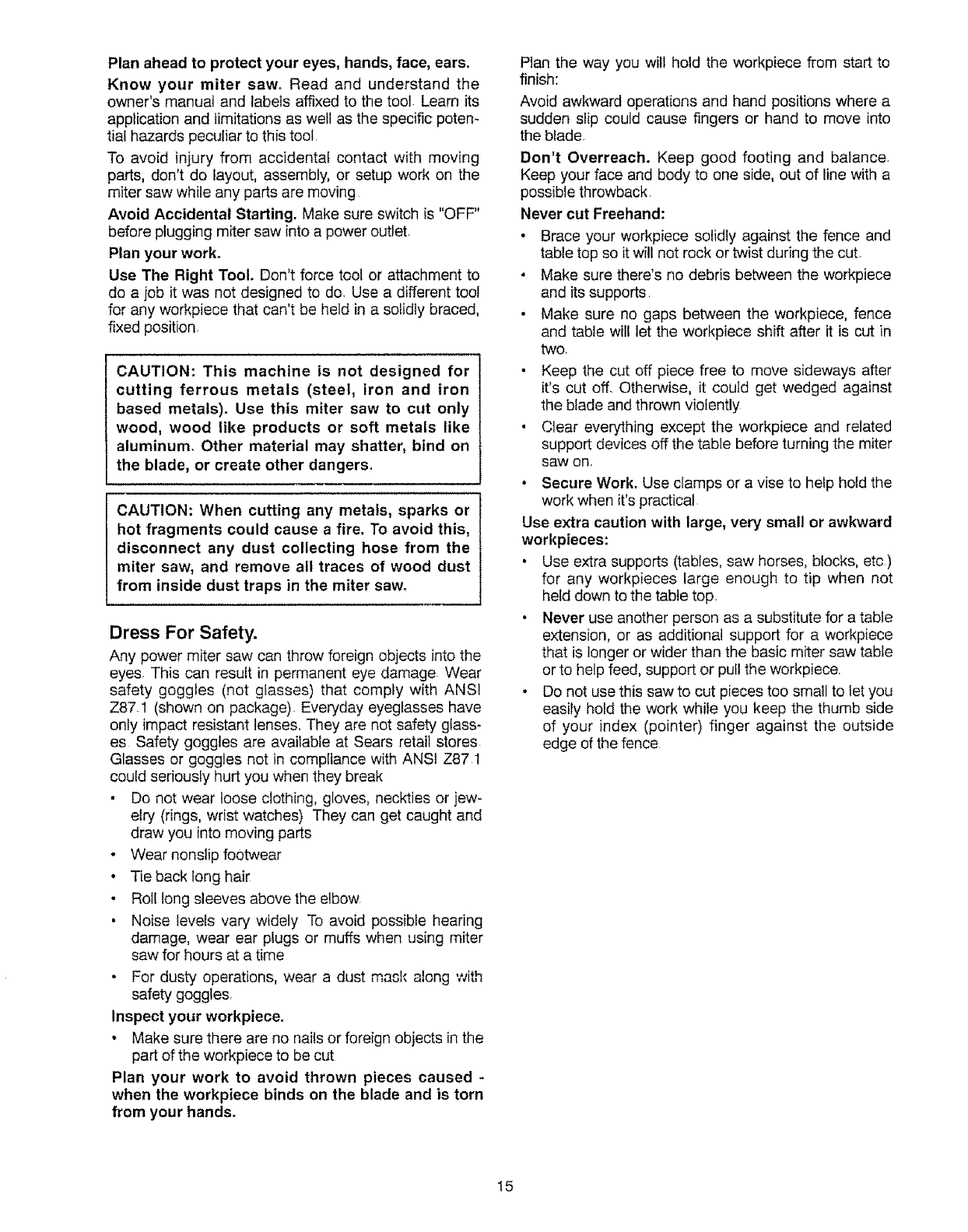
Plan ahead to protect your eyes, hands, face, ears.
Know your miter saw° Read and understand the
owner's manual and labels affixed to the tool Learn its
application and limitations as well as the specific poten-
tial hazards peculiar to this tool
To avoid injury from accidental contact with moving
parts, don't do layout, assembly, or setup work on the
miter saw while any parts are moving
Avoid Accidental Starting. Make sure switch is "OFF"
before plugging miter saw into a power outlet
Plan your work.
Use The Right Tool. Don't force tool or attachment to
do a job it was not designed to do. Use a different tool
for any workpiece that can't be held in a solidly braced,
fixed position
CAUTION: This machine is not designed for
cutting ferrous metals (steel, iron and iron
based metals). Use this miter saw to cut only
wood, wood like products or soft metals like
aluminum. Other material may shatter, bind on
the blade, or create other dangers.
CAUTION: When cutting any metals, sparks or
hot fragments could cause a fire, To avoid this,
disconnect any dust collecting hose from the
miter saw, and remove all traces of wood dust
from inside dust traps in the miter saw.
Dress For Safety.
Any power miter saw can throw foreign objects intothe
eyes This can result in permanent eye damage Wear
safety goggles (not glasses) that comply with ANSI
Z87.1 (shown on package). Everyday eyeglasses have
only impact resistant lenses, They are not safety glass-
es Safety goggles are available at Sears retail stores
Glasses or goggles not in compliance with ANSI Z87l
could seriously hurt you when they break
• Do not wear loose clothing, gloves, neckties or jew-
elry (rings, wrist watches) They can get caught and
draw you into moving parts
• Wear nonslip foOtwear
• Tie back long hair
• Roll long sleeves above the elbow
• Noise levels vary widely To avoid possible hearing
damage, wear ear plugs or muffs when using miter
saw for hours at a time
• For dusty operations, wear a dust mask along with
safety goggles,
Inspect your workpiece,
• Make sure there are no nails or foreign objects in the
part of the workpiece to be cut
Plan your work to avoid thrown pieces caused -
when the workpiece binds on the blade and is torn
from your hands.
Plan the way you will hold the workpiece from start to
finish:
Avoid awkward operations and hand positions where a
sudden slip could cause fingers or hand to move into
the blade.
Don't Overreach. Keep good footing and balance.
Keep your face and body to one side, out of line with a
possible throwback.
Never cut Freehand:
• Brace your workpiece solidly against the fence and
table top so it will not rock or twist during the cut.
• Make sure there's no debris between the workpiece
and its supports.
• Make sure no gaps between the workpiece, fence
and table will let the workpiece shift after it is cut in
two.
• Keep the cut off piece free to move sideways after
it's cut off, Otherwise, it could get wedged against
the blade and thrown violently
• Clear everything except the workpiece and related
support devices off the table before turning the miter
saw on,
• Secure Work. Use clamps or a vise to help hold the
work when it's practical.
Use extra caution with large, very small or awkward
workpieces:
• Use extra supports (tables, saw horses, blocks, etc)
for any workpieces large enough to tip when not
held down to the table top.
• Never use another person as a substitute for a table
extension, or as additional support for a workpiece
that is longer or wider than the basic miter saw table
or to help feed, support or pull the workpiece.
• Do not use this saw to cut pieces too small to let you
easily hold the work while you keep the thumb side
of your index (pointer) finger against the outside
edge of the fence
15



